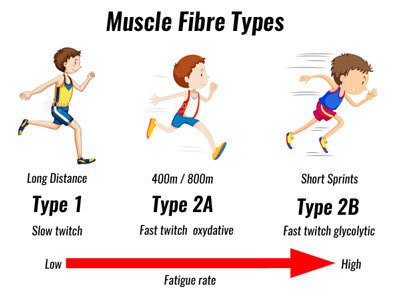
Recently I have started playing football again. I have always loved football and when I was young, I was actually very good at it. Living in Cambodia and comparing myself with the professional players, I actually think that I can be even better than them.
This lets me try and find out the fastest way to get back in shape and get the best out of myself athletically. I found this amazing training schedule: “THE HIGH INTENSITY INTERVAL TRAINING” or simply HIIT.
When you look at this picture, which body type do you think is healthier? And which figure would you rather have?

What is High Intensity Interval Training?
A definition of HIIT; a high intensity interval training is a training methodic that is meant to gain results by doing relatively short exercises.
Researchers at Laval University in Canada conducted two groups experiment. One group did a 15-week program using the HIIT while the other group did a 20-week long steady-state cardio training. The results were as follows.
- Steady-state training burned 15,000 calories more.
- Steady-state training resulted in a loss of muscle mass.
- HIIT led to significant more body fat loss.
- HIIT resulted in more calorie burns “after” the workout.
- HIIT led to muscle mass increase.
So what is wrong with steady-state endurance training?
People think that in order to lose weight and gain muscle we need to burn our calories and so to train longer. So if we exercise continuously on a similar intensity we should be able to lose fat and then create more muscles. Strangely this is not true. Steady-state training actually makes you gain more fat content and lose muscle fibers.
In order to understand this, let’s take a look at the three types of muscles fibers we have;
Type 1 (slow twitch) muscle fiber is red in color. This muscle fiber is resistant to fatigue and is capable of producing repeated low intensity contractions. Marathon runners typically have a lot of these fibers.
Type 2A (fast twitch oxidative) muscle fiber is also red in color. They are a hybrid of type 1 and type 2 fibers. When stretching the duration of a training with type 2B muscle fibers, they can become type 2A fibers. Middle long distance runners typically have a lot of these muscle fibers.
Type 2B (fast twitch glycolytic) muscle fiber is white in color. They deliver short, fast bursting of power, but become fatigue rapidly. Short distance sprinters and bodybuilders typically have a lot of these fibers.

Approximately 40 percent of our muscles consist of Type 1 fast twitch fibers. The rest around 60 percent, is of type 2A and type 2B. Doing steady-state training we are only using type 1 fiber and neglecting the other 60 percent of our muscles. If we don’t use the other two, our body has a natural tendency to lose it. That’s why steady-state training reduces muscle content of the type 2A and 2B muscle fibers. HIIT on the other hand is a complete training of all muscles, and uses all the three muscle types.
The negative effects of steady state training:
- Decrease testosterone
- Decreases immune system function
- Increases massive cortisol (the stress hormone). Our ancestors were probably never used to running for long distances on the same speed.
- And decreases in muscle content
2 Amazing benefits of doing HIIT.
1. Your body produces significantly more Human Growth Hormone.
This amazing hormone has tremendous benefits to our body. Growth hormone (GH), also known as somatotropin (or as human growth hormone [hGH or HGH] in its human form), is a peptide hormone that stimulates growth, cell reproduction, and cell regeneration in humans and other animals. It is thus important in human development.
As we get older our body creates less and less HGH. But by doing 8 weeks of high intensity training our body can boost the HGH level by more than 600 percent.
2. Increases longevity
Our DNA is structured in long strands in a certain x structure called chromosome. At the end of the X shape there is the telomere. The telomere is an extremely precise indicator of our biological life. The younger and healthier we are the longer are the telomere strands. The older and unhealthier the shorter the telomere. When putting stress to our body it has a shortening effect on the telomere. Like eating unhealthy food, smoking toxic fumes, or just overstressing ourselves. Doing HIIT, it slow downs the shortening of the telomere and even regrows it. “Reversing the aging process.”

So how to perform the HIIT?
If planning to do a HIIT training, always start with a warming up. HIIT training can be done with almost any exercise. Swimming, running, jumping, push-ups, plyometric exercises, incorporated with weights, etc. The key of the training is that you push your body to the upper limits of its strength. You keep doing this until your body signals that it cannot go anymore. This can be 10 seconds sprinting, cycling for 30 seconds or doing push-ups lasting maybe 20 seconds. After this take (depending on the state of your fitness) between 15 to 90 seconds rest, and then start over again. If you will, you can even change or mix exercises. Do this from 3 (for starters) to 8 repetitions (for advanced).
- Exercise at nearly 100% speed and power
- 15-90 seconds recovery period
- 3-8 times of repetitions
After the training you need to recover 2 or 3 days. Enough rest is needed to let your muscles repair itself. It’s best not to do HIIT training more than 3 times a week.
Thank you for reading.
----------------------------------

